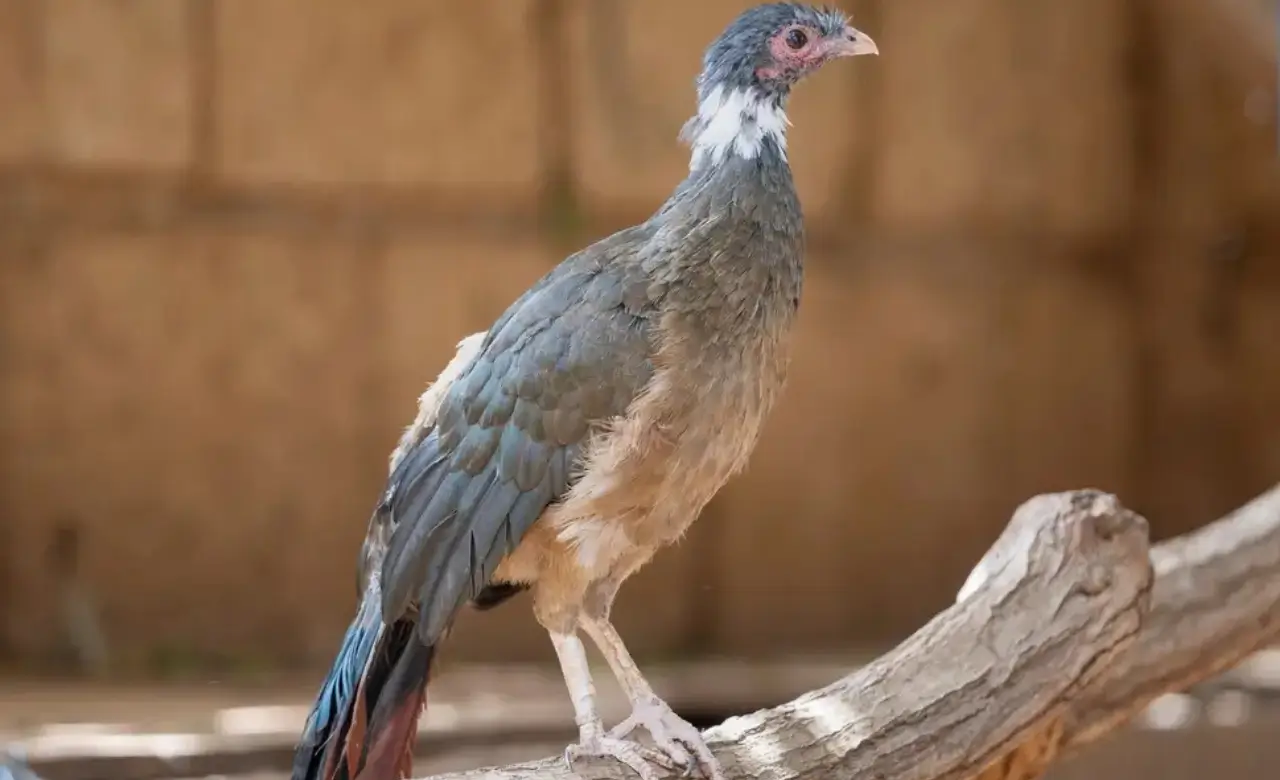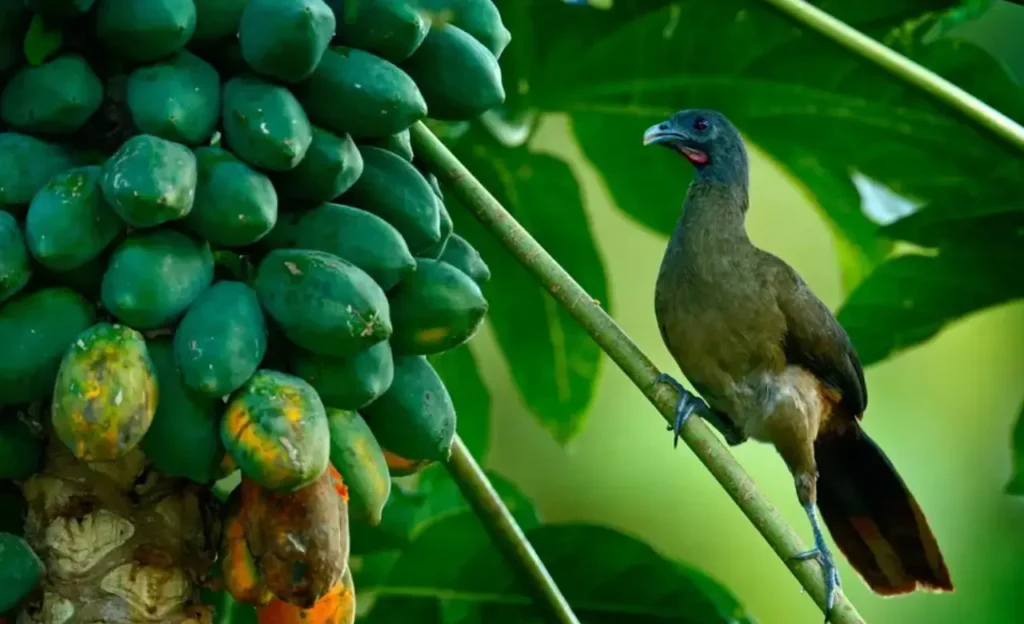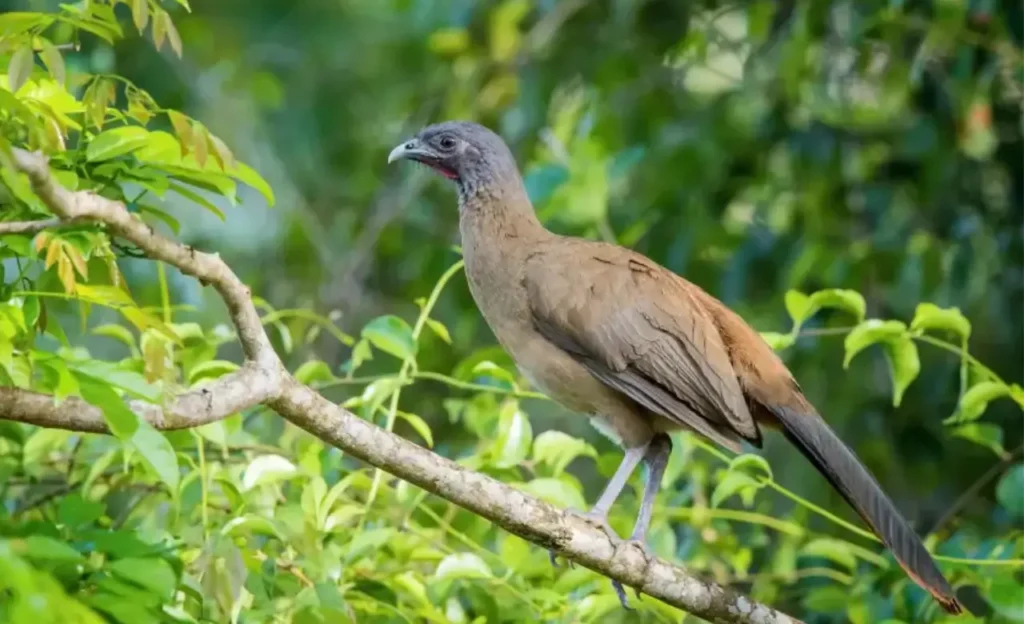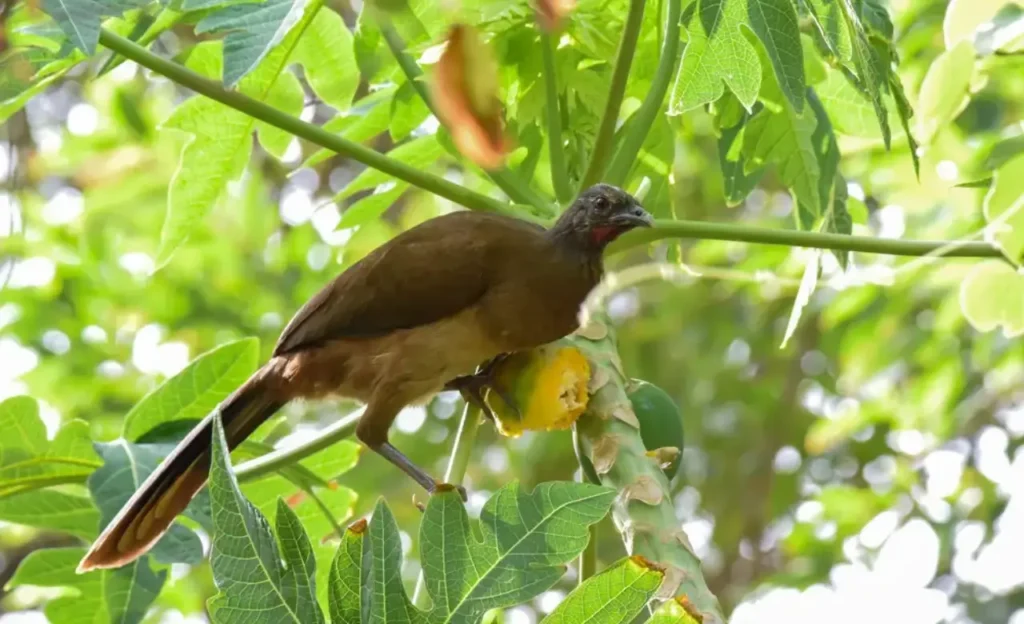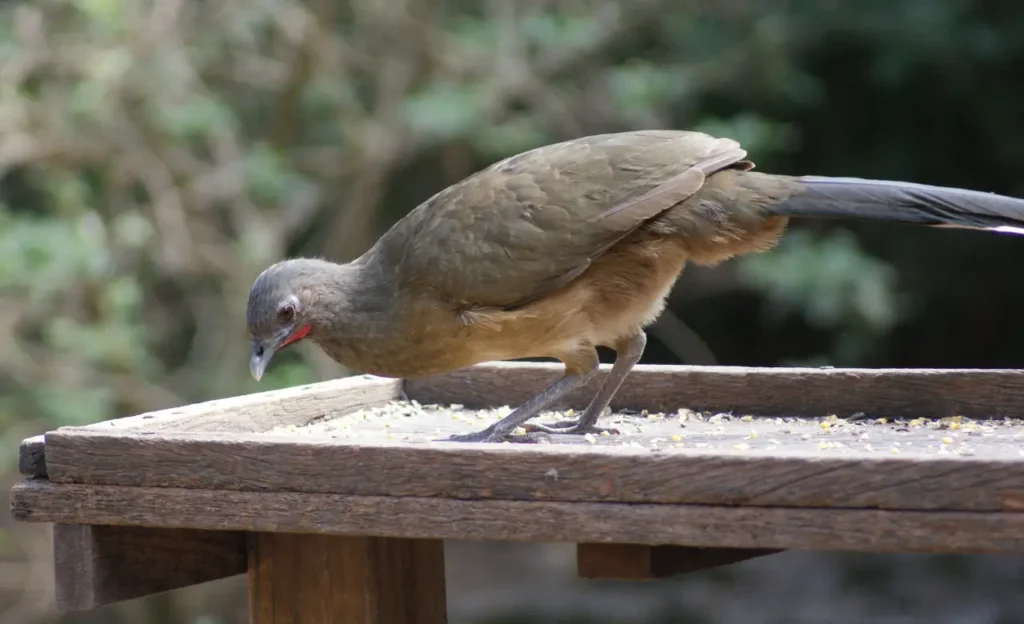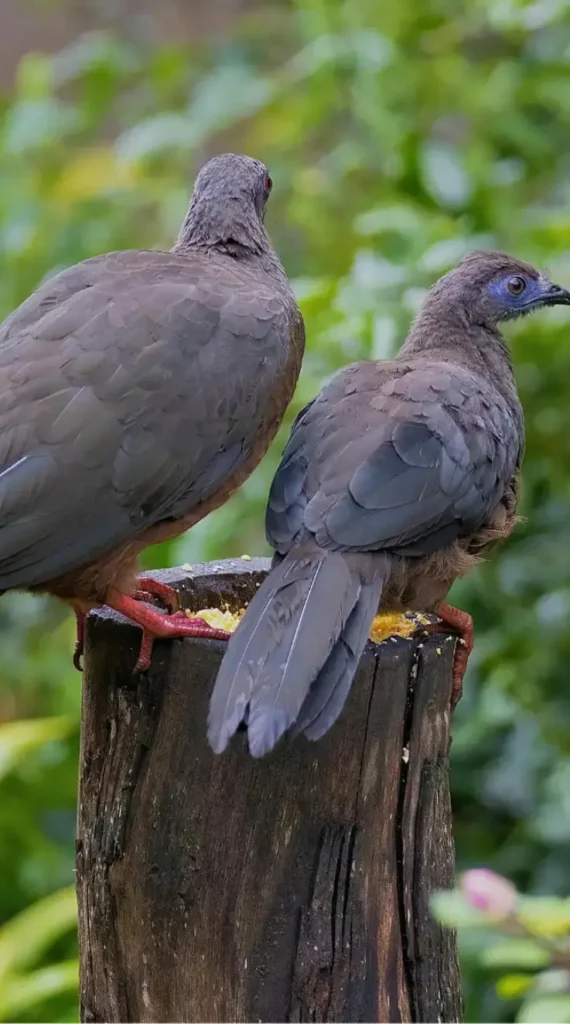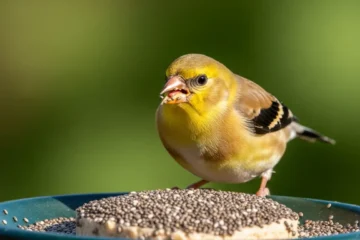The Rufous-vented chachalaca is a large bird that looks like a chicken. It is known for its loud calls that echo through the forest. It is mostly found near the Rio Grande Valley in the United States. It has brownish feathers, a long tail, and a reddish patch under its tail that gives it its name.
These birds are social and often seen in small groups. They feed on fruits, leaves, and flowers. Their noisy nature makes them easy to hear but sometimes difficult to spot in dense trees.
Images of Rufous-vented chachalaca
Price of Rufous-vented chachalaca
These birds are not commonly traded or available for purchase because of wildlife protection laws.
Lifespan of Rufous-vented chachalaca
A Rufous-vented Chachalaca can live around 7 to 8 years in the wild. It may reach up to 12 years in captivity with proper care. Their lifespan often depends on the availability of food and protection from predators.
Characteristics of Rufous-vented chachalaca
Rofous-vented Chacalacas have many unique characteristics like their sound. Here are certain important things related to this bird:
General Characteristic
Feature in Rufous-vented Chachalaca
Scientific name
Ortalis Ruficauda
Size
About 22–24 inches long
Weight
Around 1.5 to 2 pounds
Color
Brown body with a reddish patch under the tail
Habitat
Forest edges and dense brush in southern Texas
Diet
Fruits, berries, leaves, and flowers
Call
Loud, repetitive “cha-cha-la-ca” sound
Social behavior
Often seen in small, noisy groups
Flight
Short, quick flights between trees
Interesting Facts about Rufous-vented chachalaca
Rufous-vented chachalaca birds grab the attention due to their interesting habits and history. Here are certain important facts related to this bird:
1. Ancient Family Ties
The Rufous-vented Chachalaca belongs to an old bird family connected to Australia’s birds. This species originates mostly from South America and their relatives are spotted around Texas. This is a unique family tree that links distant geographies.
2. Quietly Common Global Status
Conservationists classify this chachalaca as “Least Concern” even though it is not found everywhere. It leads a stable life across its range. It is quite resistant despite habitat changes that threaten many birds.
3. Different but Distinct Appearance
This bird is medium in size. It has a small head, long legs, and a broad tail. It’s plain brown color blends into the trees. It’s rufous or white tail tip sometimes peeks through the foliage.
4. Dawn Chorus Experts
They launch into a noisy duet when the sun rises. Males lead with a low “ka-ka-rooki-rooki-ka” and females respond with a sharp “watch-a-lak”. It is a lively morning performance in perfectly synchronized manner.
5. Gentle Forest Hunters
They quietly move along branches to hunt for fruits, berries, leaves, and seeds. Their love of fruit makes them useful gardeners. They spread seeds as they move across the forest.
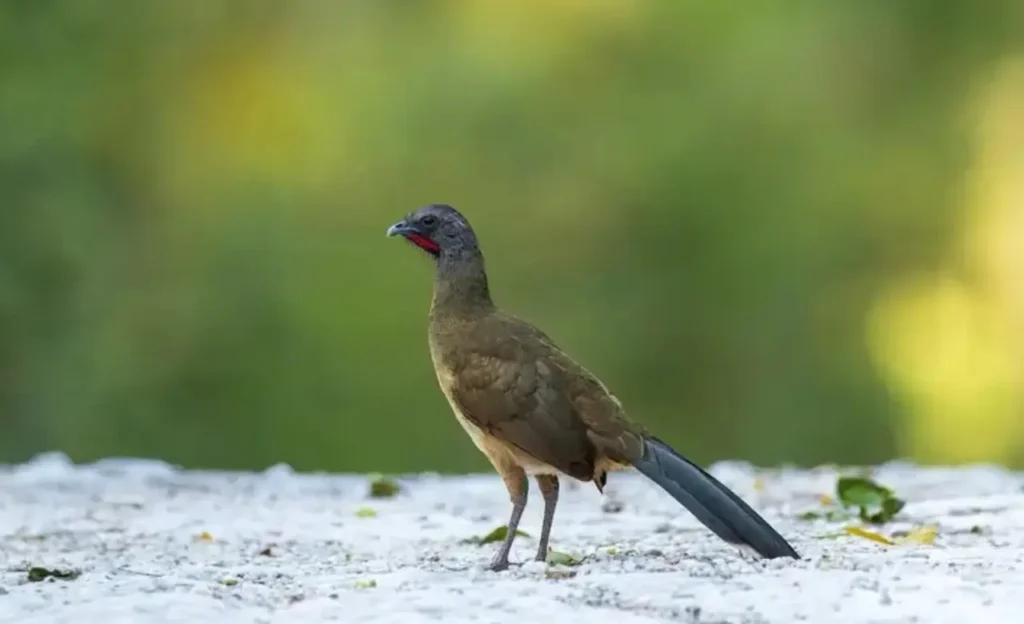
6. Swift Tree Travelers
They surprise people by their ability to fly vertically, as they are normally thought of as ground birds. They can take off straight up from branches. They usually hops through the trees to stay close to its canopy home.
7. Simple and Cozy Nests
Nesting happens on platforms made from handcrafted twigs which remain low in trees. The female lays three or four sizable white eggs and then keeps them warm by herself.
8. Two Subspecies With Shared Traits
There are two kinds of Rufous-vented Chachalacas. One lives in northeast Colombia, northern Venezuela, and Tobago. The other inhabits the parts of northwest Colombia and Venezuela. Their slight differences link them as close cousins.
9. Not Big on Moving Around
The Rufous-vented chachalaca prefers to stay put instead of migrating with the seasons. It doesn’t travel long distances to make its home stable and familiar across the years.
10. Survive in Open Forests
These birds are adaptable. They can be found in forest edges, scrubby woodlands, and even semi-open areas. They shift easily between trees and open ground.
11. Huge Geographic Range
This chachalaca has a surprisingly wide vertical and horizontal range from lowland moist forests to dry savannas. This extends up to an altitude of 2,120 meters. It reflects flexibility which is rarely seen in many birds.
12. Continuous Populations
Their population holds steady despite habitat change. They remain common and aren’t divided into isolated groups. They’re more secure than many other birds that live in the forest.
13. Helpful Crop Dispersers
They also serve a purpose while hunting. They spread life across the forest as they eat fruits and seeds. This makes them helpful for natural regrowth.
14. Early Human Encounters
Related chachalacas sometimes visit gardens in southern Texas. They are drawn to fruit and even cat food. Locals describe them as surprisingly bold. They walk up close, making a racket and leaving feathers.
15. Garden Thieves
These birds can also be mischievous. They’re known to go for tomatoes, melons, beans, and radishes in gardens. They sometimes turn your veggies into their grand breakfast.
Sightseeing of Rufous-vented chachalaca
The Rufous-vented chachalaca can usually be seen in parks in Texas. Here is a list of some of them:
Exact Location
City/State
Bentsen-Rio Grande Valley State Park
Mission, Texas
Santa Ana National Wildlife Refuge
Alamo, Texas
Resaca de la Palma State Park
Brownsville, Texas
Estero Llano Grande State Park
Weslaco, Texas
Laguna Atascosa National Wildlife Refuge
Los Fresnos, Texas
Photography tips for Rofous-vented Chachalaca
Rofous-vented Chachalaca is a beautiful bird. It is important to click a clear photo when there is a chance.
- Visit South Texas nature parks early in the morning when the birds are most active.
- Use a zoom lens to capture close shots without disturbing them.
- Focus on their reddish tail patch for a striking detail in photos.
- Stay near fruiting trees where they often come to feed.
- Keep your camera ready for quick movements as they hop between branches.
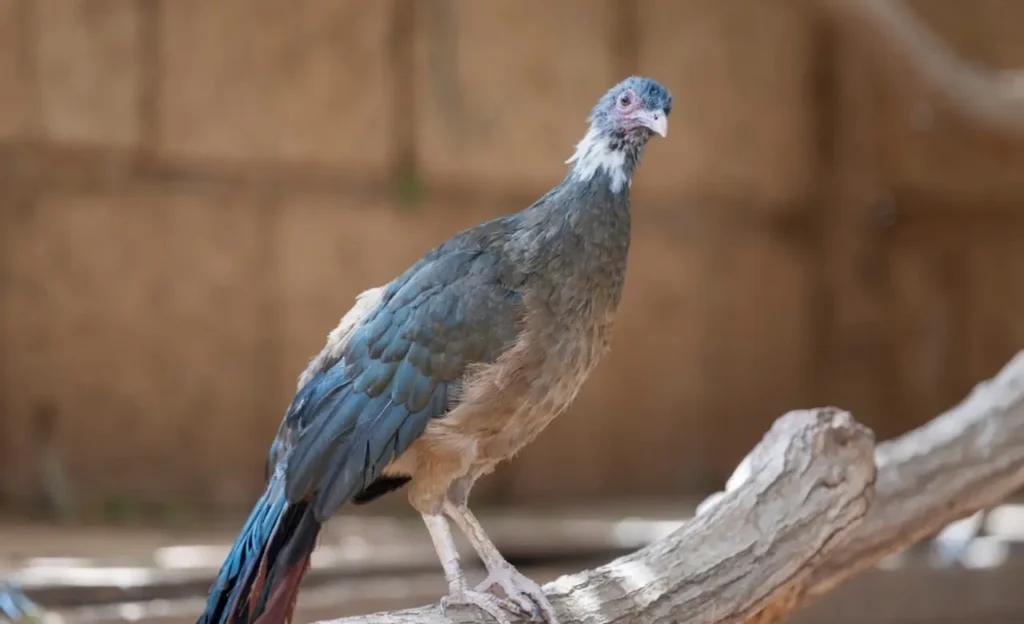
Wrapping up
The Rofous-vented Chachalaca is a loud bird that looks like a chicken. It is often found in large groups and easily interacts with humans. It can fly vertically and helps in natural regrowth.
FAQs
Q1: What is a chachalaca?
Q2: Where can I see the Rufous-vented Chachalaca in the USA?
You can spot them in the Rio Grande Valley of southern Texas, especially in protected parks and wildlife refuges.
Q3: What do Rufous-vented Chachalacas eat?
They eat fruits, berries, leaves, and flowers, often foraging in trees and shrubs.
Q4: Are Rufous-vented Chachalacas loud?
Yes, they have a noisy and repetitive call that can be heard from far away, especially in the mornings.
Q5: Do Rufous-vented Chachalacas migrate?
No, they stay in the same area year-round and do not migrate.

